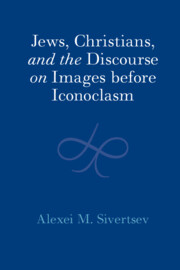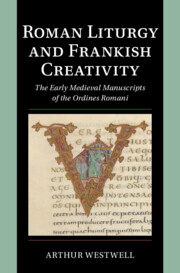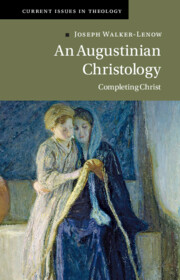124 results
Congregation leader and member discussions in a church-based family strengthening, mental health promotion and HIV prevention trial: Intervention
-
- Journal:
- Cambridge Prisms: Global Mental Health / Volume 11 / 2024
- Published online by Cambridge University Press:
- 03 April 2024, e52
-
- Article
-
- You have access
- Open access
- HTML
- Export citation
2 - Liturgical Experience
-
- Book:
- Ways of Living Religion
- Published online:
- 07 March 2024
- Print publication:
- 14 March 2024, pp 56-89
-
- Chapter
- Export citation

Jews, Christians, and the Discourse on Images before Iconoclasm
-
- Published online:
- 01 February 2024
- Print publication:
- 08 February 2024

Roman Liturgy and Frankish Creativity
- The Early Medieval Manuscripts of the Ordines Romani
-
- Published online:
- 04 January 2024
- Print publication:
- 18 January 2024
The transfer of vineyard ownership during the French Revolution: A pivotal event in the history of French wine
-
- Journal:
- Journal of Wine Economics / Volume 18 / Issue 4 / November 2023
- Published online by Cambridge University Press:
- 21 December 2023, pp. 324-331
-
- Article
-
- You have access
- Open access
- HTML
- Export citation
5 - Modernity: The Idea of Progress
- from Part II - The State We’re in and How We Got There
-
- Book:
- Sustainability Science
- Published online:
- 07 December 2023
- Print publication:
- 07 December 2023, pp 91-106
-
- Chapter
- Export citation
11 - Extending the Incarnation
- from Part III - The Body of Christ
-
- Book:
- An Augustinian Christology
- Published online:
- 02 November 2023
- Print publication:
- 16 November 2023, pp 378-419
-
- Chapter
- Export citation

An Augustinian Christology
- Completing Christ
-
- Published online:
- 02 November 2023
- Print publication:
- 16 November 2023
Chapter 22 - A Religion of the Word and the Question of Authority
- from Part III - Laudianism: What It Wasn’t
-
- Book:
- On Laudianism
- Published online:
- 05 October 2023
- Print publication:
- 19 October 2023, pp 288-307
-
- Chapter
- Export citation
Chapter 19 - The Sabbath and the Laudian Attitude to Authority
- from Holy Times
-
- Book:
- On Laudianism
- Published online:
- 05 October 2023
- Print publication:
- 19 October 2023, pp 246-256
-
- Chapter
- Export citation
Chapter 16 - The Altar and Visible Succession
- from Holy Ordinances
-
- Book:
- On Laudianism
- Published online:
- 05 October 2023
- Print publication:
- 19 October 2023, pp 196-218
-
- Chapter
- Export citation
Chapter 2 - Andrewes’ Political Theology
- from Part I - Laudianism: Where It Came From
-
- Book:
- On Laudianism
- Published online:
- 05 October 2023
- Print publication:
- 19 October 2023, pp 59-65
-
- Chapter
- Export citation
5 - The Harbor on High
-
- Book:
- Knowledge, Faith, and Early Christian Initiation
- Published online:
- 11 October 2023
- Print publication:
- 19 October 2023, pp 114-133
-
- Chapter
- Export citation
Chapter 9 - The Church in David Tracy’s Theology
- from Part III - Church and World
-
-
- Book:
- Beyond the Analogical Imagination
- Published online:
- 28 September 2023
- Print publication:
- 12 October 2023, pp 192-208
-
- Chapter
- Export citation
4 - The Creole
-
- Book:
- Being the Heart of the World
- Published online:
- 28 September 2023
- Print publication:
- 12 October 2023, pp 131-163
-
- Chapter
- Export citation
3 - Adam Smith’s “Industrial Organization” of Religion
-
-
- Book:
- Interpreting Adam Smith
- Published online:
- 14 September 2023
- Print publication:
- 28 September 2023, pp 39-61
-
- Chapter
- Export citation
Chapter 22 - Puccini and Religion
- from Part VI - Puccini through a Political Lens
-
-
- Book:
- Puccini in Context
- Published online:
- 31 August 2023
- Print publication:
- 14 September 2023, pp 181-188
-
- Chapter
- Export citation
Pope Francis’ Vision for a Synodal Church
-
- Journal:
- New Blackfriars / Volume 104 / Issue 1113 / September 2023
- Published online by Cambridge University Press:
- 01 January 2024, pp. 511-525
- Print publication:
- September 2023
-
- Article
-
- You have access
- Open access
- HTML
- Export citation
Cathedral Growth: How the Rest of the Church of England Can Join In: Away from Polarization and Towards a New Mixed Ecology for Growth
-
- Journal:
- Journal of Anglican Studies , First View
- Published online by Cambridge University Press:
- 29 August 2023, pp. 1-17
-
- Article
-
- You have access
- Open access
- HTML
- Export citation
5 - Contesting Citizenship through Religious Identity
-
- Book:
- Africa's Urban Youth
- Published online:
- 10 August 2023
- Print publication:
- 10 August 2023, pp 118-144
-
- Chapter
- Export citation



